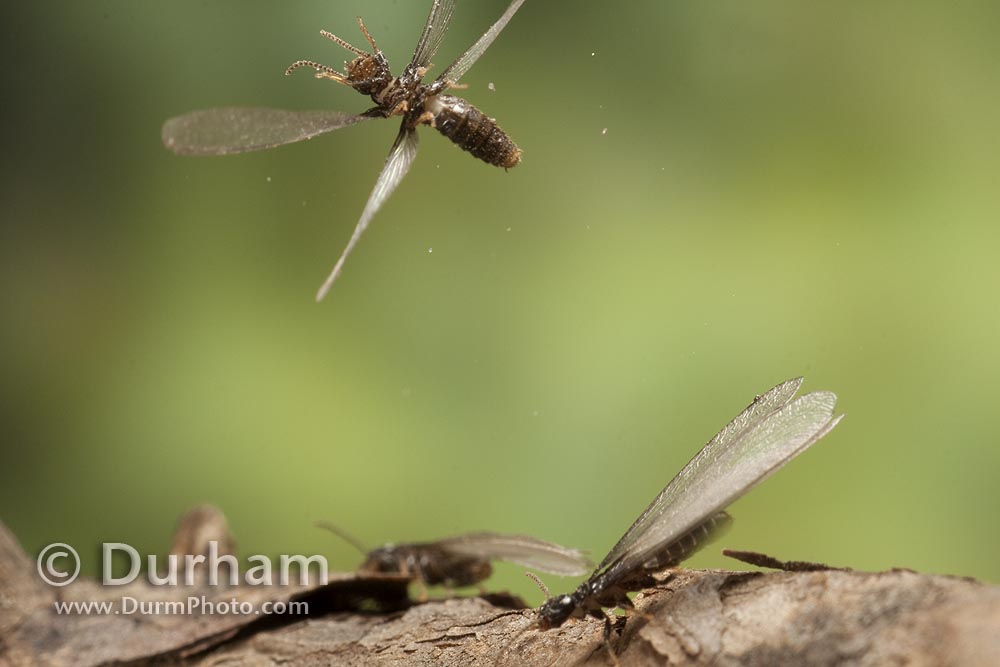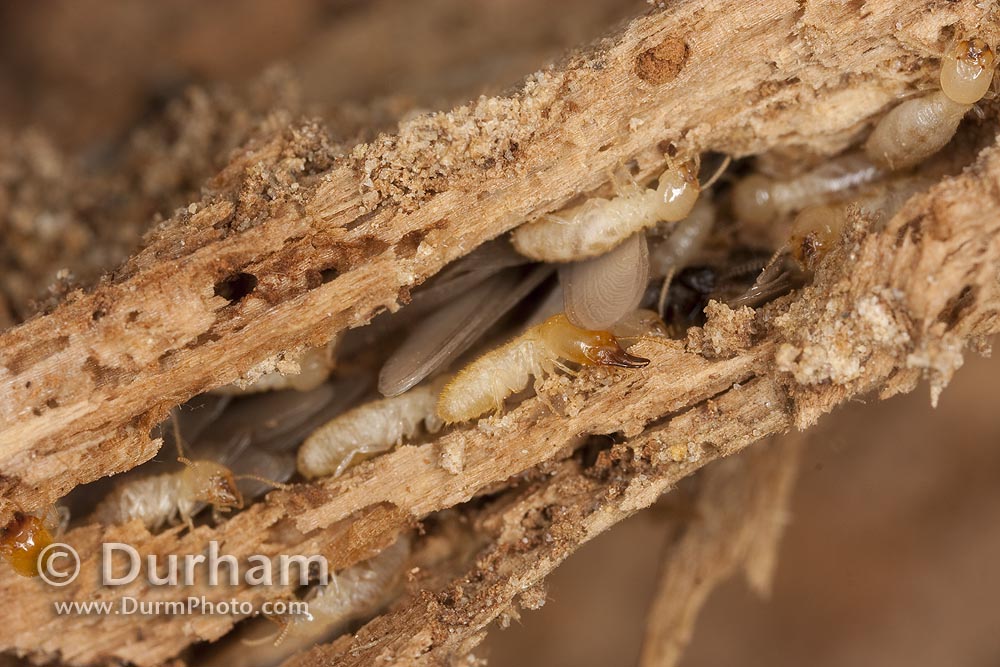From AnimalsDiversityWeb: R. flavipes reproduce in swarms. Swarming occurs when a colony reaches a certain size and when temperature and moisture levels are favorable. Usually this occurs on warm days after rainfall. Some researchers speculate that swarming occurs after rainfall because the ground is moist, which make it easier to create a new nesting site (Benavides, 1988). Alates, winged swarmers, fly from their native nest until they hit a "fracture point" in the air. This causes their wings to fall off (Benavides, 1998) This flight is not considered a mating flight because R. flavipes are only sexually attracted to their mates after their wings have broken off (Light, 1922). Once they find a mate, which takes a while because the female is choosy, they walk together to find a suitable nesting site. They mate after they've built a "nuptial chamber" in their new nest (Benavides, 1998). At her peak a queen will lay an egg every 3 seconds, or 30,000 a day. She will lay 10's of millions of eggs during her life

subterranean termites (Reticulitermes flavipes) workers and winged reproductives

subterranean termites (Reticulitermes flavipes) beginning their reproductive and distribution flights.

subterranean termites (Reticulitermes flavipes) workers and soldiers in decaying wood

1 comment:
Interesting
Post a Comment